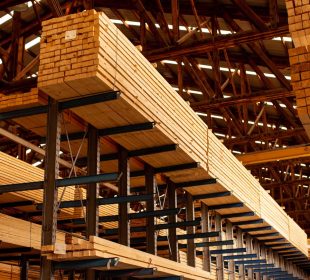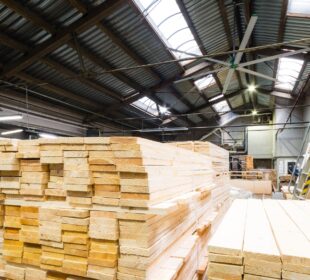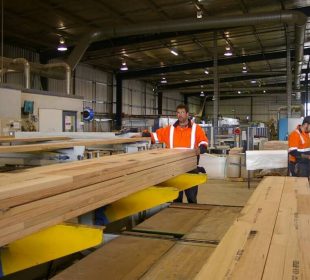On 15 April, the European Timber Trade Federation (ETTF) and the European Organization of the Sawmill Industry (EOS) organised a joint conference call to take stock of the effects of the COVID‐19 crisis in the timber market and to gauge what the situation will be in the coming months. Representatives from eleven European countries contributed to the discussion.
Participants concluded that the impact of the COVID-19 outbreak on the timber sector is wide‐ranging and severe and the legacy is likely to be long-lasting. However, there are significant differences between European countries, indicative both of variable spread of the virus and policy responses.
The construction sector, a fundamental market for the timber industry, has taken a hit in several countries, notably Spain, Italy, the United Kingdom and France, and this has impacted on timber suppliers and other business elsewhere in Europe which have a high level of exposure to this group of countries.
In other parts of Europe – including Scandinavia, Germany, and the Netherlands - the local construction sector has been less affected. However, a crunch period for these countries might yet be on the cards in the third quarter of 2020.
The impact has also varied between market sectors. Sectors connected to logistics, such as pallets, are performing comparatively better than sectors connected to manufacturing, such as the furniture and joinery industries.
In response to struggling demand, European wood processors have introduced double‐digit production curtailments, with reductions in Scandinavia generally being less than in Central Europe.
Participants in the conference call expected that the Do It Yourself (DIY) sector will help to prop up the European timber market during a period when people are confined to their homes. Larger DIY stores are also one of the few categories of retailer that have been permitted to remain open during the lockdown and are therefore better placed to support sawmills and trade.
For both EOS and ETTF members, overseas markets are very important. Participants in the call stressed that China, as both a critical client and producer, has been recovering in the last few weeks, while sales to the United States are dropping.
They noted also that the Indian market is completely closed, while there are also considerable difficulties on both the demand and supply side in some South‐East Asian countries.
Looking forward, both organisations agreed that the length and intensity of the crisis will be crucial as to the pattern of recovery. If the lockdowns and other measures prove successful in controlling COVID-19 in the coming months, there is some hope for a return to an almost business‐as‐usual situation. It was noted that the timber sector was performing well in Europe in the first quarter of 2020. Such a “V‐shaped” outcome represents a best‐case scenario.
However, if there is a prolonged contraction in the general economy and the construction sector in the second half of 2020, it will take a heavy toll on the timber industry, even in countries that so far have managed to weather the storm.
There are also likely to be very significant structural changes, still largely unpredictable, in both the wider economy and the timber sector as a result of the pandemic.















